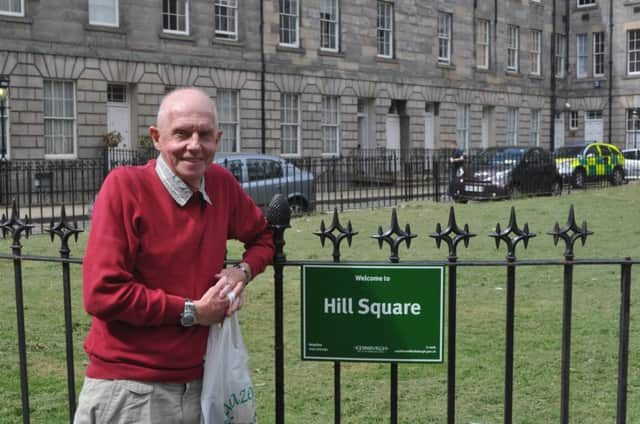Obituary: Tom Logan, former footballer and physiotherapist


TOM was born an only child in wartime Edinburgh. In the last week of his final illness, he said his legs were becoming weak and heavy, which triggered his memory as a little boy waking up one morning unable to move his legs – there was a prolonged time off school before his strength returned. He had polio, but was lucky and recovered full function and later went on to Tynecastle School in Gorgie. Little wonder then that he came under the spell of the football club next door – the mighty Heart of Midlothian – for which he developed an affectionate pride that lasted all his life.
His 16th birthday came and went and the time had come to be leaving school. His skill, and the dexterity of those legs that had once given him so much concern, took him to the junior football club Loanhead Mayflower, during which time he played for Scotland at Wembley in the under-18 team as wing half (in modern terminology, a midfielder). In 1961, as a raw 19-year-old, he played a full season for Hearts reserves – no mean accomplishment at that time when Tommy Walker was manager – and Hearts were enjoying a golden era, winning all the Scottish football silverware.
Advertisement
Hide AdAdvertisement
Hide AdBut Tom was a canny man. He was a reluctant self-promoter and rarely spoke about his football career. He kept his light under a bushel and, therefore, I am indebted to David Speed (Hearts Football Club archivist), who was able to confirm these details. Tom had a football injury that was to shape his life. His femur was broken and hence his introduction to the Royal Infirmary of Edinburgh and orthopaedic traction for many weeks. He went back into training and resumed playing, eventually signing for Berwick Rangers in July 1967. He damaged the weakened leg again, so it was back under the care of Mr McQuillan.
Inevitably, because of his injury absence, Tom went on the transfer list again, this time moving club from Berwick upon Tweed to East Fife at Methil and a year later to Falkirk. But by then Tom had become committed to a different career, though he continued to play football in the smaller clubs of Broxburn Athletic and finally for the 1972 season, Haddington in East Lothian. For a third time, he had injured his femur and the surgical opinion from a now familiar Mr McQuillan was: “Laddie you’re going to lose that leg if you play any more football.”
Tom accepted that his football playing days were over. But by now he’d been impressed by skill and dexterity of a different kind. It was the hospital world of orthopaedics and the musculoskeletal system that attracted him.
He qualified at the School of Physiotherapy at the Royal Infirmary of Edinburgh on Lauriston Place and so began his second career, which was based at the orthopaedic Princess Margaret Rose (PMR) Hospital at Fairmilehead. His special interest developed in the limb-fitting centre, which was later to become so advanced and so important to so many young fit men – and into whose ranks he nearly had become a member himself.
He continued his service to football as club physiotherapist to Falkirk in the early 1980s before going back to where he most loved to be – at Tynecastle with Hearts. He supported Alan Rae, the senior physio at Tynecastle during the late 1980s, contributing in the weekly discussions and decisions about the match fitness of the players.
After ten years of physiotherapy and limb-fitting at PMR, a boyhood contemporary from Leith – one George Kennedy – encouraged Tom to move into industry. George also had been a professional sportsman – in his case rugby league – but was now in hospital equipment provision. This was at the sales end of the plastics revolution.
Out went re-usable red rubber tubing and stainless steel gadgets to be replaced by single-use plastic hospital equipment. George Kennedy CBE by now, was chairman of Smiths Industries Medical Systems Portex (SIMSPortex) based in the Home Counties – supplying anaesthetic airway support equipment, various operating theatre appliances and, in particular, a new generation of single-use plastic catheters for epidural anaesthesia.
Tom became the Portex representative looking after Scotland, Northern Ireland and North England – and when required, he rallied to the summons of the chairman to fly down to London and SIMSPortex HQ to assist with “various issues”.
Advertisement
Hide AdAdvertisement
Hide AdTom was known throughout hospital anaesthesia all over Scotland and beyond. There can be few hospitals that he did not visit and few anaesthetists of that era who did not know him.
He avoided fanfare and formality to introduce new equipment or devices; nor would he bamboozle doctors with facts, figures and sales blurb. He’d toss a box of free samples on to the coffee table and say “here you are – try these when you can – and I’ll be in touch”. Portex remained the market leader during all of his career with the company.
He loved to play golf and for many years was the trade exhibition front man at the Scottish Society of Anaesthetists annual meeting at Peebles Hydro. He was elected an honorary member of the Scottish Society of Anaesthetists (currently in its centenary year) and became one of a very small select group of honoraries among a membership of many hundreds.
And after Edinburgh, his favourite place was Gran Canaria where he had an apartment and spent many holidays and longer periods after retirement. In May, 2013, on return to Edinburgh lung cancer was diagnosed. Though he had good symptom control during his final six months, it was with characteristic efficiency that he planned and arranged his own funeral.
Though separated from his wife, he is survived by a daughter, two sons, and his latter companion Rose.